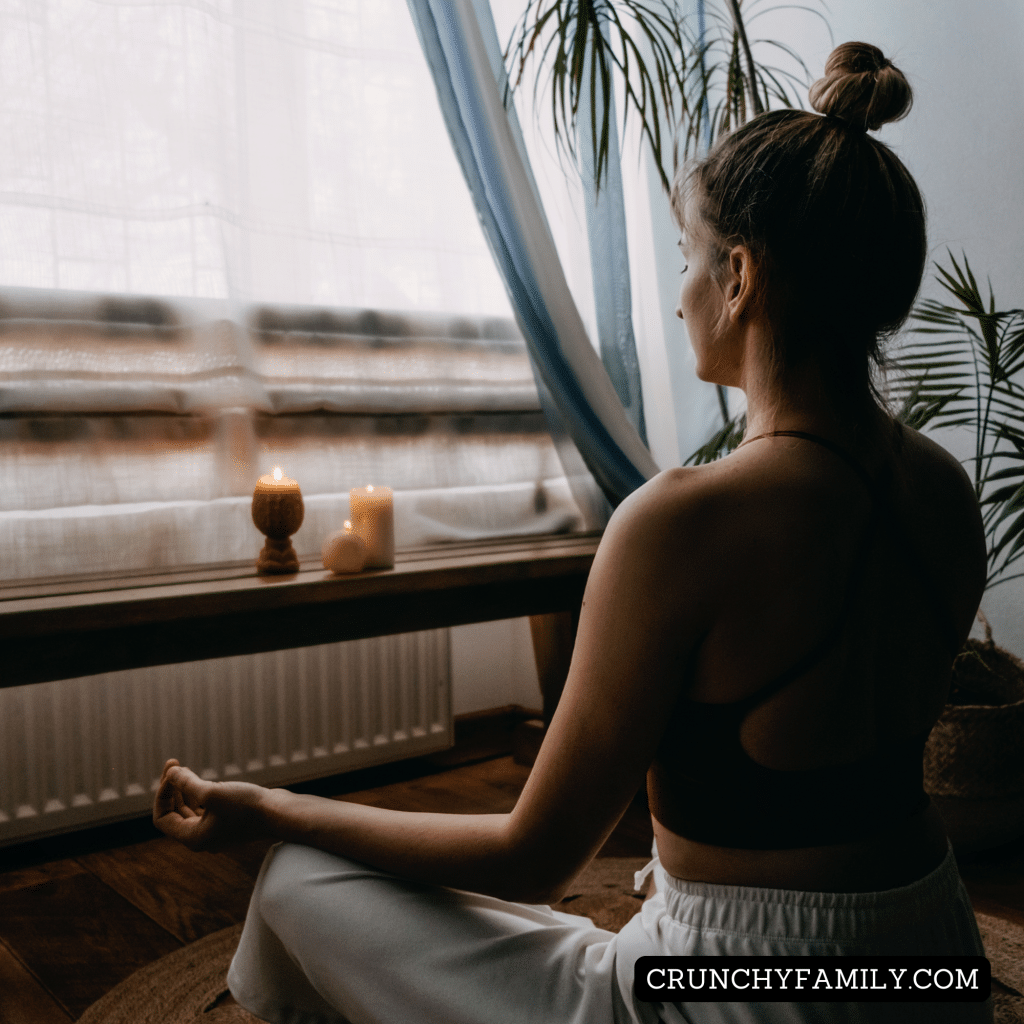One of my favorite things to do in the morning is walking on freshly rained-on grass. It instantly brings my attention to my feet and to the present moment, calming any overwhelming thoughts or feelings.
There’s something about the cool, damp sensation that grounds me, making me feel more connected to the earth and less caught up in the whirlwind of my mind.

Life has a way of sweeping us up in a flurry of thoughts, emotions, and endless to-do lists. Finding the right time and the right techniques to ground ourselves can make a huge difference in our mental health and overall well-being.
Here are some powerful ways to bring yourself back to the present moment and calm those anxious thoughts.
1. Deep Breaths
Taking deep breaths is a powerful tool for calming the nervous system. Diaphragmatic breathing, where you breathe deeply into your diaphragm rather than shallowly into your chest, can help reduce feelings of anxiety and stress.

Example: Inhale slowly for four counts, hold for four counts, and exhale for four counts. Repeat a few times and notice how your body feels more relaxed.
2. Body Scan
A body scan is a type of mindfulness meditation where you focus on different parts of your body, noticing any physical sensations.
Start at your toes and work your way up to your head, paying attention to any areas of tension or discomfort. This mindfulness exercise can help you feel more connected to your entire body and less focused on stressful thoughts.

Example: Begin by closing your eyes and taking a few deep breaths. Focus on your toes and notice any sensations. Gradually move your attention upward through your legs, torso, arms, and finally to your head.
3. Activate Your Senses
Engaging your senses is an easy way to bring yourself back to the present environment. Try holding a piece of ice, listening to the ticking clock, or taking a sip of a glass of water. Noticing the sensations of these activities can help distract you from anxiety and bring your mind back to the present moment.

Example: Hold a piece of ice in your hand and feel the cold sensation. Pay close attention to how it feels and how your body reacts to it.
4. Meditate
Mindfulness meditation is a great way to develop mindfulness skills and practice staying in the present moment.
Even a few minutes a day can have a positive impact on your state of mind. There are many different strategies, such as focusing on your breath, a mantra, or the distant sounds around you.

Example: Sit comfortably, close your eyes, and focus on your breath. If your mind wanders, gently bring your attention back to your breath.
5. Walk in Fresh Air
A short walk, especially in nature, can do wonders for your mental health. The physical activity combined with fresh air helps to clear your mind, reduce muscle tension, and shift your focus away from difficult emotions.
Notice the distant traffic, the chirping birds, or the rustling leaves as you walk.

Example: Take a 10-minute walk in a nearby park, paying attention to the sights and sounds around you.
6. Listen to Your Favorite Song
Music has a way of connecting us to our emotions and can be a powerful way to ground yourself. I dance when I am sad, happy or stressed.
It helps bring me to the present moment and movement helps you release negative thoughts and feelings.

Listening to your favorite song or playing a musical instrument can help shift your focus from intense emotions to the music, providing a quick fix for anxious thoughts.
Example: Put on your favorite song and focus on the lyrics, melody, and how it makes you feel.
7. Ground Yourself
A quick grounding exercise involves using your immediate environment to bring yourself back to the present.
Try naming five things you can see, four things you can touch, three things you can hear, two things you can smell, and one thing you can taste.

This exercise engages all your senses and helps to calm an anxiety attack.
Example: Look around and identify five different colors in your surroundings. Touch four different textures. Listen for three distinct sounds. Smell two scents. Taste one item, like a piece of gum.
8. Progressive Muscle Relaxation
Progressive muscle relaxation involves tensing and then slowly releasing different muscle groups in your body. This technique helps reduce muscle tension and promote overall relaxation.

Example: Start by tensing the muscles in your feet, hold for a few seconds, and then slowly release. Gradually work your way up through your legs, abdomen, arms, and finally to your face.
9. Visualization
Visualization involves imagining a peaceful scene or a calming place that makes you feel relaxed. This mental escape can help reduce stress and anxiety.

Example: Close your eyes and picture yourself on a serene beach. Imagine the sound of the waves, the warmth of the sun, and the feeling of the sand beneath your feet. Spend a few minutes immersed in this scene.
10. Engage in a Creative Activity
Engaging in a creative activity can be a wonderful way to ground yourself and divert your mind from anxious thoughts. Activities like drawing, painting, or knitting require focus and can provide a calming effect.
Example: Spend a few minutes sketching a simple picture or coloring in a coloring book. Focus on the lines, shapes, and colors as you create.

Incorporating these mindful and grounding techniques into your daily routine can have a profound impact on your mental and emotional health.
Whether you’re dealing with anxiety disorders or just the occasional stressful event, these strategies offer practical and powerful ways to stay grounded and present in your daily life.
Remember, the first step to managing difficult emotions is to bring your attention to the present moment, one breath at a time.
More related reads:
1 thought on “10 Mindful And Grounding Techniques To Calm Your Thoughts”